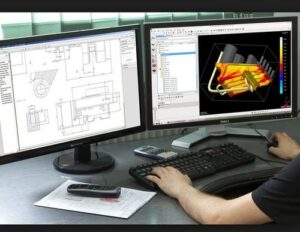Design
Anuvega is specialized in making the PCB layout design since 2013. We design layouts for various applications with applicable international standards of designing.


 We Design the PCB layouts for all types of applications and classes according to the international standards like IPC etc. Anuvega expertise includes medical, Consumer, Commercial, and many other key areas of electronics industry applications.
We Design the PCB layouts for all types of applications and classes according to the international standards like IPC etc. Anuvega expertise includes medical, Consumer, Commercial, and many other key areas of electronics industry applications.
Anuvega have an expertise PCB design team, Good work environment and infrastructure has been established for PCB design. Anuvega full fill the customer needs with good quality and on time completion of projects.
PCB Design Services of all types, including, Multi-Layer, Rigid, Flex, Rigid-Flex, Highly Complex & Dense. PCB layout designs done with High speed, accuracy, impedance control and length matching. We maintain library bank and create Advanced component footprints as per IPC standards.
 We also provide the service for fabrication of PCBs for all types of classes specially for class 3 PCB’s with group A and Group B compliance certificates.
We also provide the service for fabrication of PCBs for all types of classes specially for class 3 PCB’s with group A and Group B compliance certificates.
We do make tests for the designed layouts as mentioned below. We also design the mechanical enclosures for high end applications with high accuracies and get manufactured.
Our Capabilities
PCB Design Capabilities
High Speed Signal Integrity
Thermal Analysis
Power Integrity
- RF Design
- PTH/SMT and HDI layout designs up to 32 layers with layout densities above 200 pins per sq. inch
- HDI (Blind & Burrier)
- Flex & Rigid-Flex PCB
- Fine Pitch layout (0.4mm & below)
- Every HDI design perform signal integrity, Power Integrity and Thermal analysis
- EMI and EMC protection
- DFM and DFA protection
- Controlled Impedance
- High current rating boards
- Power boards – considering power rating with bus bar

Signal Integrity (SI) signifies the signal’s ability to propagate without distortion. Signal integrity is nothing but the quality of the signal passing through a transmission line.
The challenge of high-speed signal designs is to maintain the quality of the signals over long distances on printed circuit boards and wire harnesses. We employ signal integrity simulation to check the effectiveness of steps taken to ensure signal integrity. After designing a system with signal integrity in mind, the verification of signal integrity is required to establish standard compliance of the design.
Signal Integrity Analysis Capabilities:
- Ringing (over/undershoots/monotonicity)
- Correct termination calculation and selection
- Design guidelines/stack-up optimization
- Reflections in interconnects
- Electromagnetic radiation from the traces
- Topology/transmission line characteristics
- Waveforms/eye-diagram/routing reports
- Cross-talk analysis
- Signal losses
- EMI
- Ground Balance
- Impedance Mismatch
Thermal analysis is the process of measuring how a material/device behaves at different temperatures. For many applications, especially single materials, a thermal analysis is a physical analytical method.
While designing any real-world electrical, electronic, and mechanical and electro-mechanical system, thermal analysis can play an important role in determining the system’s thermal performance.
Dissipating heat from high power density areas of electrical and electronic sub-assemblies and maintaining their temperature below the minimum allowed limit are fundamental for system health and reliability. We offer thorough thermal analysis services to achieve the desired results.
Thermal Analysis Capabilities
- Heat sink junction temperature analysis
- 3D airflow modelling and analysis
- Component and enclosure temperature analysis
- 3D temperature distribution patterns
- Thermal interferences in a layout.
- The heat release pattern by changing the wiring coverage ratio.
- The arrangement of thermal via.
- The performance of the heatsink and optimize its design.
- The effectiveness of cooling methods such as natural air and forced air cooling.
- The feasibility of heat dissipation with circuit enclosures or casing
Power Integrity is a critical issue in high-speed designs due to their higher switching rate. If your system designs include such components, you can benefit from our experience of high-speed designs.
To maintain the power integrity of such systems, we design our circuits so that the common-impedance coupling and common-mode switching noise are kept at the minimum level. This also helps to eliminate or minimize signal integrity problems related to power supply drop.
Power Integrity Analysis Capabilities
- Board design database set-up for analysis
- AC and transient analysis
- Single node analysis for optimization of capacitor placement
- DC and steady-state analysis
- Target impedance definition for reduced DCIR DROP losses
- Multi-node analysis to refine the overall placement of the components
- Max via current
- Max Copper current density
- Reference power net loop
- Nets failed in simulation
- Recommendations to update in Design
- 3D and 2D plots
